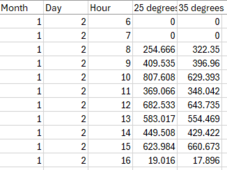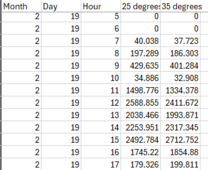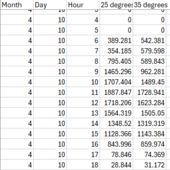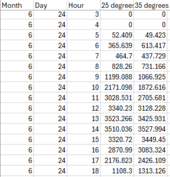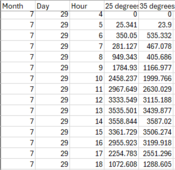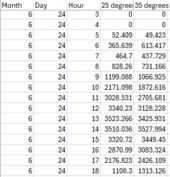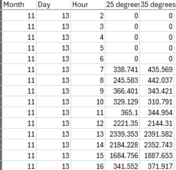hwy17
Anti-Solar Enthusiast
I'm just surprised by this.
It's a bifacial array facing 270 degrees due west.
Comparing tilts of 25 and 35 degrees, the hourly data is showing higher production for the 35 degree tilt in 8-10am for the same days.
Do you think it's like a bifacial gain thing?
I was expecting higher tilts to move production later, at the cost of overall production.
It's a bifacial array facing 270 degrees due west.
Comparing tilts of 25 and 35 degrees, the hourly data is showing higher production for the 35 degree tilt in 8-10am for the same days.
Do you think it's like a bifacial gain thing?
I was expecting higher tilts to move production later, at the cost of overall production.



